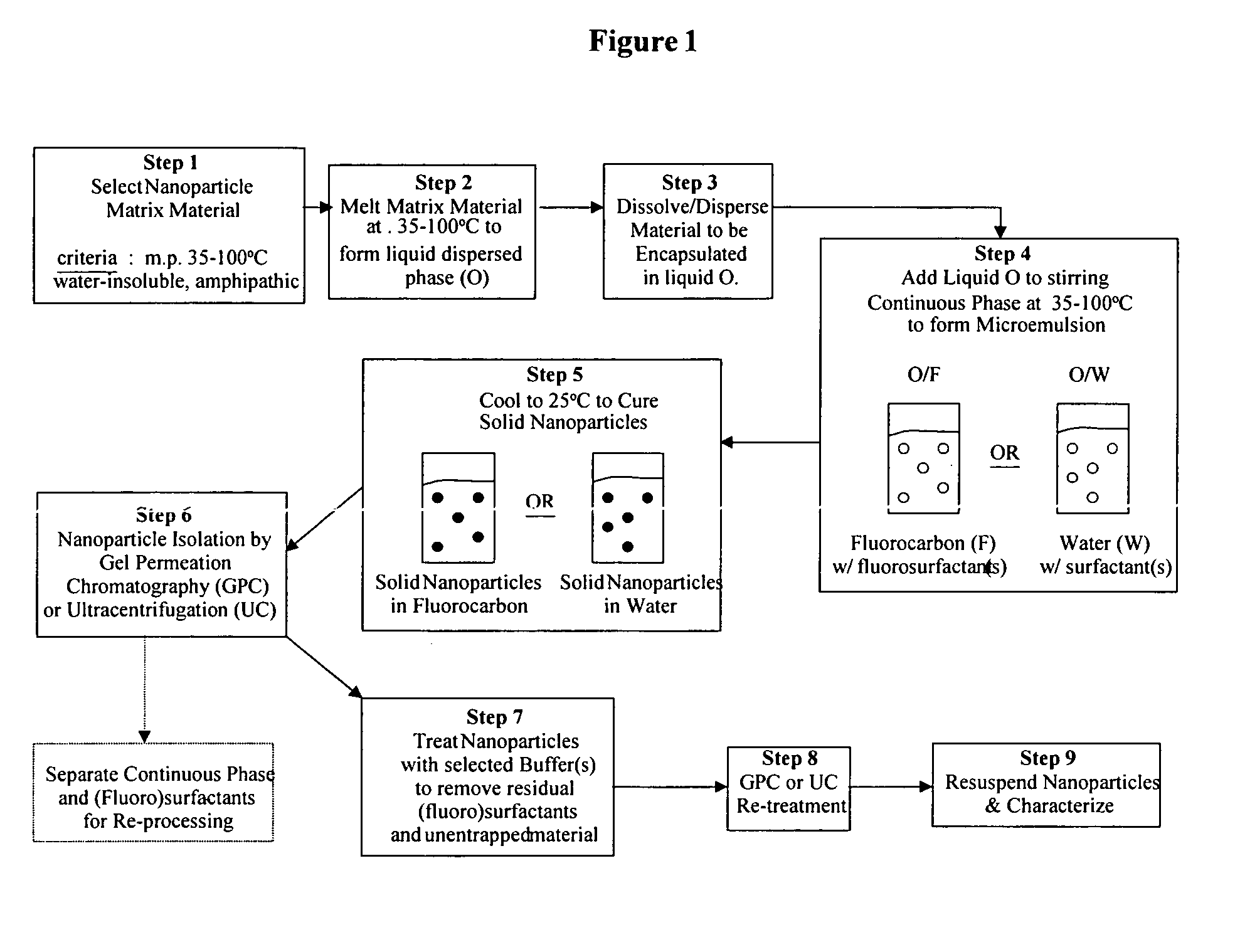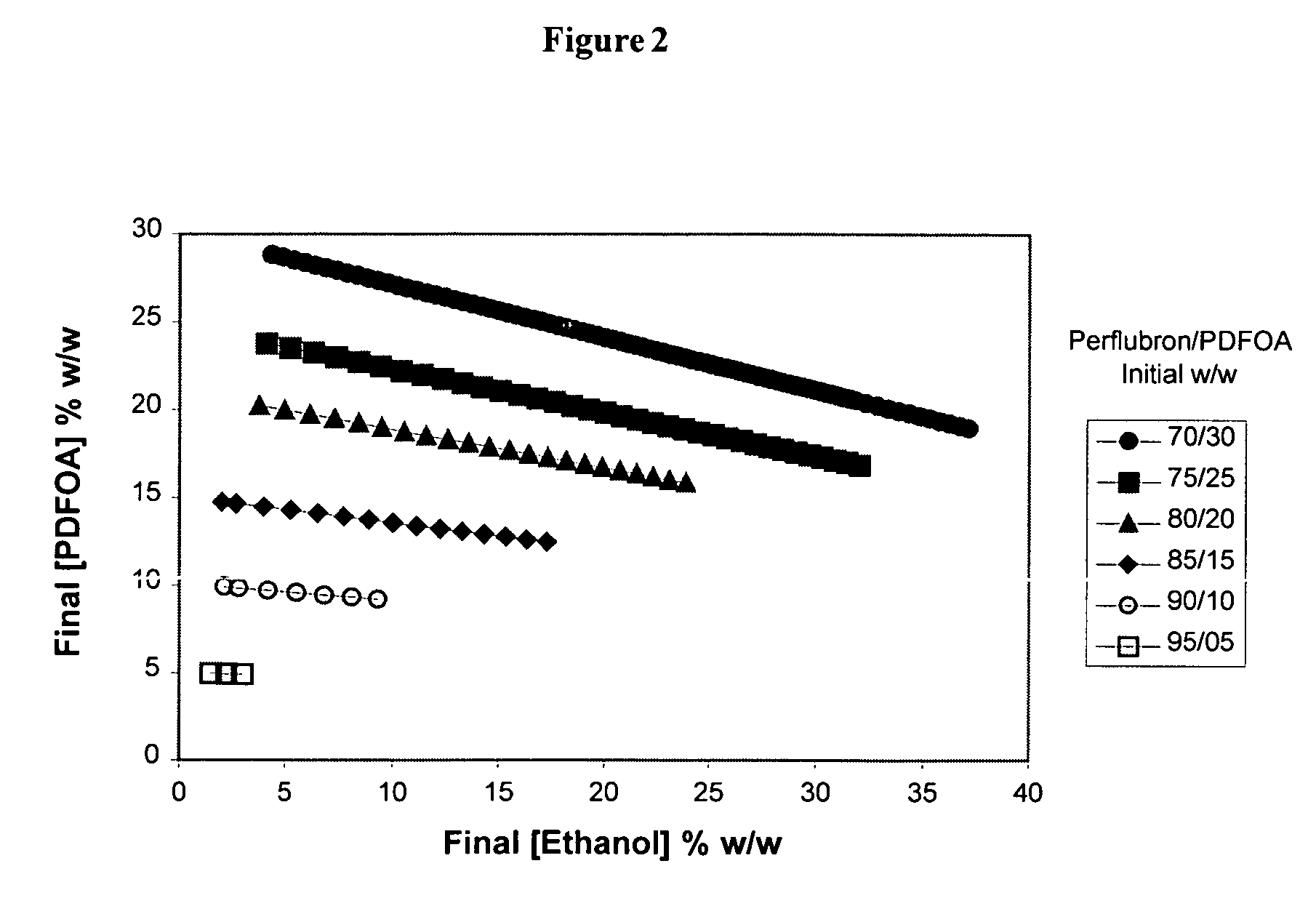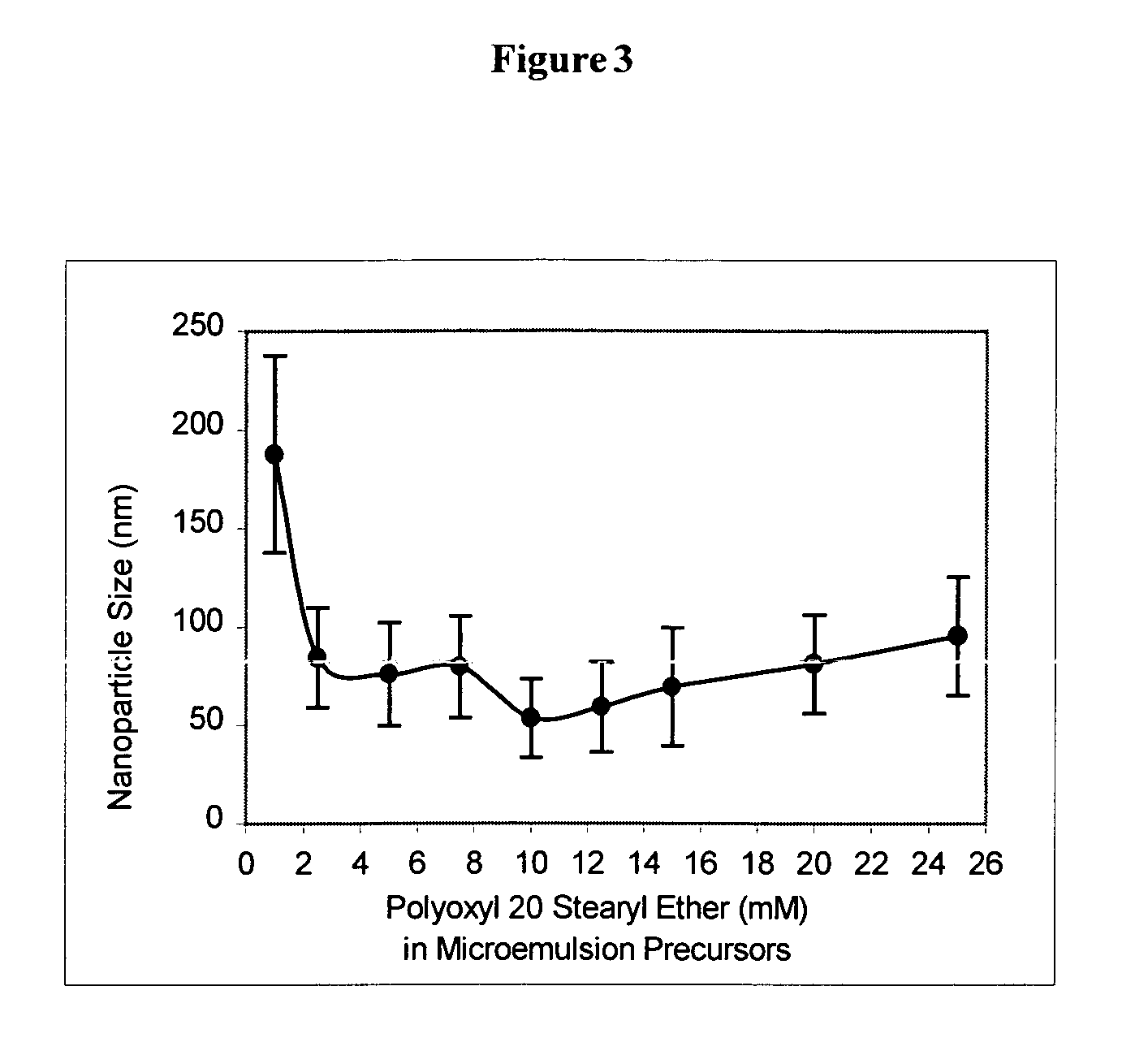Microemulsions as precursors to solid nanoparticles
- Summary
- Abstract
- Description
- Claims
- Application Information
AI Technical Summary
Benefits of technology
Problems solved by technology
Method used
Image
Examples
example 1
[0083]Plasmid DNA Solubility in Ethanol. For all studies, we utilized plasmid DNA that contains the cytomegalovirus (CMV) enhancer and promoter and the luciferase gene ligated into a pBluescript KS-derived backbone modified to contain the kanamycin resistance gene, Tn5 (derived from pNEO, Pharmacia, Piscataway, N.J.) and with the deletion of the f1 origin of replication. The plasmid DNA was obtained from GeneMedicine, Inc. (now Valentis, Inc.).
[0084]Solubility and stability of plasmid DNA in the ethanol phase is imperative in order to encapsulate large amounts of plasmid DNA in the solid ethyl cellulose nanoparticles. Fortunately, the exposure of plasmid DNA to ethanol / salt mixtures is a common technique to precipitate and purify plasmid DNA. A simple solubility experiment was performed to demonstrate that plasmid DNA remained soluble when aqueous solutions of plasmid DNA were diluted with 95% ethanol. To stirring plasmid DNA (1 mg in 1 mL of water) in a glass vial, ethanol was adde...
example 2
[0085]Selection of Fluorosurfactants. For initial testing as possible surfactants, we selected or synthesized a series of fluorinated surfactants as shown in Table 1. These fluorosurfactants have chemical moieties allowing for both association or solubility with the perflubron continuous phase (highly fluorinated chains) and association or solubility with the ethanol dispersed phase (polar head-groups).
[0086]
TABLE 1Fluorosurfactants Used in Preliminary StudiesFluorosurfactantStructureFSN-100 (Zonyl ®)F(CF2CF2)1–9CH2CH2O(CH2CH2O)0–25HFSO-100 (Zonyl ®)F(CF2CF2)1–7CH2CH2O(CH2CH2O)0–15HPentadecafluorooctanoicacidCF3(CF2)6COOHD2Proprietary structureTridecafluoro-1-octanol(D3)CF3(CF2)5(CH2)2OHD4Proprietary structureTridecafluoroheptanoicacid (D5)CF3(CF2)5COOHPerfluorotetradecanoicacid (D6)CF3(CF2)12COOHPerfluorododecanoicacid (D7)CF3(CF2)10COOHPentadecafluoromethyloctanoate(D8)CF3(CF2)6COOCH3Octanoic acid (Control)CH3(CH2)5CH2COOH
example 3
[0087]Pseudo-Phase Diagrams: Fluorosurfactant Screen. Studies focused on E / F microemulsions that allowed for maximum solubilization of ethanol. E / F microemulsion systems having higher ethanol content allow for increased concentration of plasmid DNA in the systems and ultimately the cured solid nanoparticles. To achieve maximum solubilization of ethanol, we constructed classical pseudo-phase diagrams for microemulsions (Bhargava et al., 1987) using a matrix screening approach for each fluorosurfactant candidate. Briefly, a small amount of ethanol was added to defined perflubron (X %) / (fluorosurfactant) (100-X %) mixtures in an attempt to solubilize ethanol and define the microemulsion window (i.e., portion of diagram that represents a clear system). A 0.5 g mixture of perflubron (X=70% to 95% w / w) and fluorosurfactant (5% to 30% w / w) was prepared in glass vials. While the mixture was stirring, ethanol was added in 5 μL (=4.1 μg ethanol) aliquots. The clarity (transparency) of the sys...
PUM
| Property | Measurement | Unit |
|---|---|---|
| Temperature | aaaaa | aaaaa |
| Temperature | aaaaa | aaaaa |
| Diameter | aaaaa | aaaaa |
Abstract
Description
Claims
Application Information
 Login to View More
Login to View More - R&D
- Intellectual Property
- Life Sciences
- Materials
- Tech Scout
- Unparalleled Data Quality
- Higher Quality Content
- 60% Fewer Hallucinations
Browse by: Latest US Patents, China's latest patents, Technical Efficacy Thesaurus, Application Domain, Technology Topic, Popular Technical Reports.
© 2025 PatSnap. All rights reserved.Legal|Privacy policy|Modern Slavery Act Transparency Statement|Sitemap|About US| Contact US: help@patsnap.com



